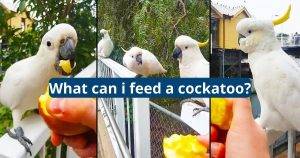African Grey Parrot Intelligence

African gray parrots are one of the world’s smartest birds. They can amass vocabularies of hundreds of words and use them in context, demonstrating advanced understanding. A famous talking parrot named Alex, purchased from a Chicago pet store in 1977, pioneered new avenues of research on bird cognition before his sudden death in 2007 at the age of 31. He was able to categorize and understand a range of concepts including same and different, big and small and even basic arithmetic (up to counting object sets).
Cognitive Abilities
African grey parrots are known for their advanced problem-solving abilities. They can recognize cause and effect and use tools to solve challenges, such as using a stick to obtain food from hard-to-reach places. Researchers have also observed them using deductive reasoning when presented with a pair of canisters – one of which contained food and the other was empty. The parrots would choose the canister with food, demonstrating that they understood that the emptiness of the other canister implied there was food in the other canister.
Thanks to the work of Alex, an African grey parrot bought from a pet store by researcher Irene Pepperberg, scientists now know that these birds can understand complicated concepts once thought unreachable by animals. These include understanding analogies, numbers and words, and the ability to classify shapes, colors and materials. In fact, their intelligence is on par with that of a five-year-old human.

Communication Skills
The African grey parrot’s ability to mimic human speech makes it one of the most popular pet birds. In captivity, it’s also been shown to understand concepts and participate in a limited way in conversation. One of the most famous examples of this was the work done by animal psychologist Irene Pepperberg and her parrot, Alex.
In the wild, African grays live in large flocks and use their abilities to communicate with other members of the flock. The flock’s elders teach younger members survival skills such as how to find water, what animals and plants are dangerous and how to hunt for food.
Parrots often communicate through body language, but interpreting these signs can be challenging. Some signals are positive and others may be negative, such as if the bird puts its wings in a crouched position or hisses. Parrots can also blush to signal excitement, and this is usually a sign of affection toward its owner.

Problem-Solving Skills
When it comes to problem-solving, avian parrots are among the smartest creatures on earth. In fact, they’ve been known to understand abstract concepts like color and shape and have exhibited advanced problem-solving skills. They can even recognize faces and numbers, as well as different materials and colors.
Moreover, parrots are also able to form unique bonds with their human caregivers and fellow birds. This is evident by their tendency to show affection through kissing and cuddling. They also have a long lifespan, which can reach up to 80 years when provided with adequate care.
But if you’re thinking of owning an African gray parrot, be aware that they can get bored easily. Hence, they need plenty of mental stimulation to stay healthy and happy. Ideally, they need around 5 hours of activities and puzzles daily. Otherwise, they can resort to destructive behaviors. That’s why they need a dedicated owner that can provide them with the right amount of time and stimulation.

Altruism
One of the most intelligent animals on the planet, African grey parrots have a IQ comparable to that of a 4-year-old child. Their complex cognition, superior memory and vocal skills set them apart from other avian species. But what makes them truly special is their prosocial nature and apparent altruism.
Researchers have observed that a pair of African grey parrots may help each other complete tasks or share food — even if neither bird gets any immediate benefit from the gesture. However, this level of generosity is rare in the animal world, and until recently, it had only been documented in mammals.
To study whether this behaviour is common in birds, Desiree Brucks and Auguste van Bayern tested two parrot species – African grey parrots and blue-headed macaws. They put the birds in an experiment where they could pass a metal ring through a compartment door to a conspecific (a fellow member of their species) and exchange it for a walnut. The more rings the parrots gave away, the more likely they were to receive a walnut themselves.





